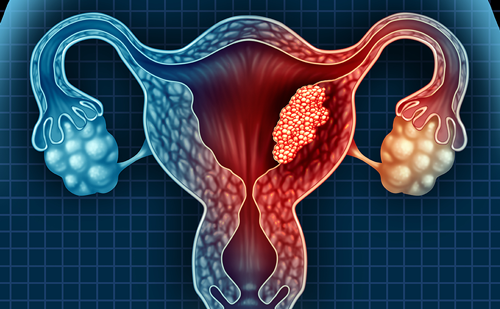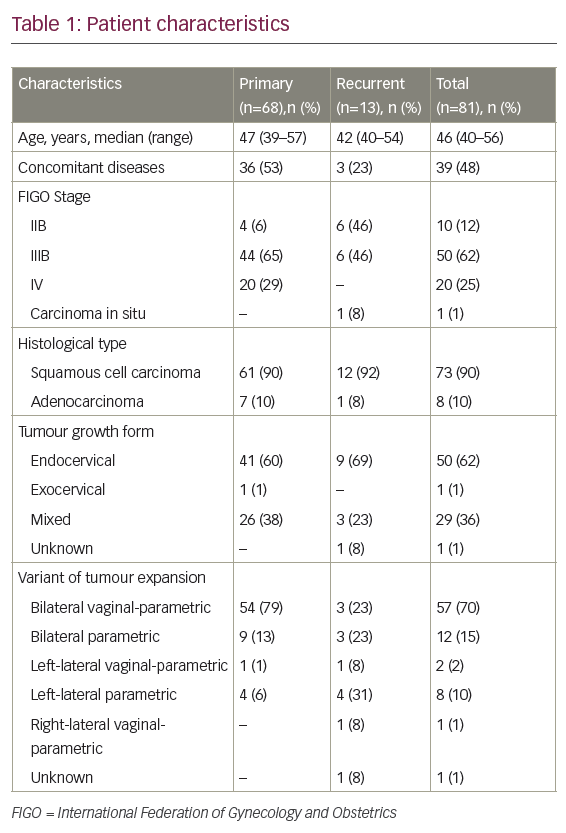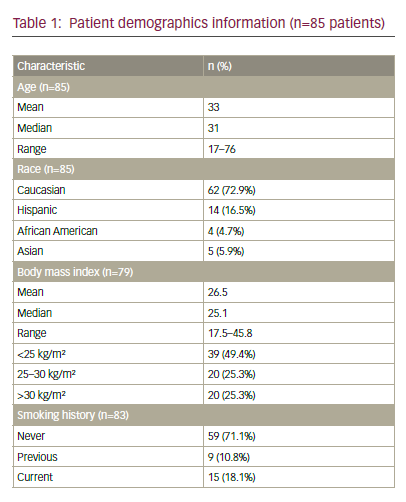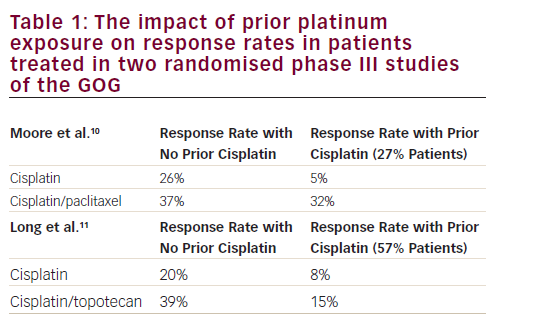This article summarizes the evolution of commonly employed surgical remedies and concludes with a description of trends in current surgical approaches.
Among the earliest reports of tumor removal in the female is a reference in 1862 by Edwin Smith, an Egyptologist, who was able to date abdominal excisions of the ovary as early as 1600BC from a recovered papyrus. These observations were made from studying Egyptian mummies whose internal anatomy had been altered and whose ovaries had been removed. However, with the influence of Hippocrates (460-375BC), who advocated with- holding surgery in the treatment of cancers, surgery was largely abandoned. This emphasis was later reinforced by Galen, and it was not until the late 18th century that resection of cancers became more widely practiced. In the US, the first elective ovarian tumor removal was performed in 1809 by Efraim McDowell and this was done before Crawford Long introduced anesthesia (1842) in wide application. In 1890, Halstead described the radical mastectomy establishing a paradigm that was to dictate cancer surgical principles until the last third of the 20th century – the widest possible resection in order to remove all disease and the sites that might harbor escaped tumor cells.This concept was not applied to ovarian cancer, which when diagnosed had escaped from the ovary and spread to other parts of the abdominal cavity 75% of the time and was considered to be beyond the scope of surgical remedy.Thus, until the 1960s, therapy consisted of removing enough disease for a diagnosis or for patient comfort and then treating with radiation therapy, and eventually chemotherapy in the 1950s. In 1972 Griffiths observed that patient survival was inversely proportional to the amount of disease remaining after the first surgical encounter for patients with ovarian cancer.This was subsequently substantiated by other therapists and the new standard of care encouraged an attempt at complete surgical removal of all visible disease when ovarian cancer was diagnosed. It was observed that this maneuver rendered the patient better able to receive cytotoxic chemotherapy, which finally included more effective chemotherapeutic agents.This effort at maximum surgical cytoreduction remains the standard of care today.
At the other end of the spectrum, the introduction of sonographic surveillance and the discovery of circulating serum tumor markers encouraged screening programs for finding ovarian cancer while it is confined to the ovary.The developments of fiber- optic light transmission and miniaturized video cameras have allowed the application of minimally invasive (laparoscopic) surgery for diagnosis, staging, and treatment of early ovarian cancer. Only by a proper staging operation, in which all areas in the abdomen that might be potential sites for a metastasis are sampled, can one rule out such metastasis and prove that the cancer is confined to the ovary, reducing the requirement for aggressive adjuvant therapy in early-stage cancer.
Such surgical techniques are also applicable to patients who are thought to be cured but develop recurrent ovarian cancer. Secondary cytoreduction is generally considered highly useful prior to re-treatment with targeted non-surgical therapy.
Cancer of the endometrium was the next gynecologic cancer to be treated surgically, and the traditional treatment was extra-fascial hysterectomy and bilateral salpingo-oophorectomy. Because the vast majority of endometrial cancers are diagnosed early in their course, this remedy was highly successful most of the time. However, during the 1950s, the role of radiation therapy was established in improving cure rates for those patients who were thought to have unusually aggressive tumors. In 1985 and 1987 there The Role of Surgery in the Treatment of Gynecologic Cancers – A Shifting Paradigm 2 B USINESS BRIEFING: US ONCOLOGY REVIEW 2004 Reference Section were initial reports from collaborative staging studies in which lymph node excisions were included in the conventional surgical approach in the treatment of endometrial cancer. Based on a study of the lymph nodes removed, cytologic analysis of washings from the peritoneal cavity, measurement of the depth of penetration in the uterine wall, and the virulence of the individual tumor cells, data was accumulated allowing prediction of lymphatic spread of disease even prior to the hysterectomy itself. The staging system for endometrial cancer was redefined incorporating the lymphadenectomy, and by this more complete surgical exercise a large proportion of patients with endometrial cancer are now spared post-operative adjunctive therapy.
Recently,laparoscopic designs for these operations were introduced and, to date, in several small series there has been no diminution in survival as a result of laparoscopy compared with laparotomy. There are on-going collaborative studies designed to verify these observations, and while minimally invasive surgery is not less extensive, it is certainly less debilitating for the patient and results in earlier recovery. However, based on the data from the staging pilot studies, the application of the most extensive surgery can be limited to approximately 20% to 30% of patients with endometrial cancer.
The classic operation for cervical cancer is the so- called radical hysterectomy with pelvic lymphadenectomy. Originally this was described in the same year by Clark in Baltimore and Reiss in Chicago (1895).The largest early series was published by Wertheim in Vienna in 1912 when he described the results of 500 operative cases after which the operation was named for him. Because of the morbidity of the surgery and discovery of the therapeutic application of radium at the turn of the century, radical surgery fell into disuse until after World War II when blood banking, improved anesthesia, and discovery of antimicrobial agents, all allowed Meigs in Boston to repopularize the procedure. Since that era, the more delicate treatment of the ureter, the importance of prolonged bladder drainage, extending the lymphadenectomy to the para-aortic region, and individualizing the degree of radicality of the procedure based on tumor extent and other patient variables, has diminished the morbidity of the procedure and allowed its intelligent application.
However, it should be remembered that the cure rate for early cervical cancer (stages I and II) is the same whether treatment is by surgery or by radiation therapy.
In the US, younger patients are usually treated by surgery because the penalty for this modality is usually immediate and not cumulative, whereas with radiation therapy the adverse effects tend to be cumulative over the years that patients age after their therapy.Therefore, older patients are more frequently treated with radiation therapy.
For the last decade, therapists have applied laparoscopic techniques to the radical hysterectomy procedure, and many now routinely perform laparoscopic lymphadenectomy with total laparoscopic radical hysterectomy or add a radical vaginal hysterectomy after the method of Schauta (described in Schauta-s clinic in Vienna contemporaneously with Wertheim-s work).The Schauta procedure affords the advantage of not opening the abdominal cavity, but it often denervates the bladder, thus interfering with efficient urinary function.
For the earliest cervical cancers, deep therapeutic conization of the cervix has been employed without hysterectomy in order to spare fertility, and most recently a radical trachelectomy with laparoscopic lymphadenectomy has been employed for slightly more advanced early cervical cancers, also with preservation of fertility.
Thus, the surgical treatment of cervical cancer has become more individualized, certainly less radical for early disease or for low or medium risk, and slightly more advanced disease.
Recurrent cervical cancer is still treated primarily by radical local resection if the disease is confined to the pelvis.The classic operation, originally described by Brunschwig in 1948, is best characterized by the title of his publication: -Complete Excision of Pelvic Viscera for Advanced Carcinoma – A One Stage Abdominal Perineal Operation with End Colostomy and Bilateral Ureteral Implantation into the Colon Above the Colostomy-. The original pelvic eviscerations, now termed pelvic -exenterations-, aimed to empty the pelvis from the pelvic brim to the perineum of all but essential neural, vascular, and skeletal structures. In the original publication the surgical mortality was 23%, and in a 1966 publication Brunschwig described a five-year survival of 17% with a surgical mortality of 20%. His patients, however, had been treated by all available modalities, had failed all treatment, and were often living with fistulas, pain, and serious dysfunction of multiple organ systems. After 1969, refinements were introduced including changes in the technique of urinary diversion so as to employ small bowel as a conduit for urinary collection, followed by the introduction of the continent urinary pouch so that patients required a stoma of a small diameter (the diameter of a dime) that they could self-catheterize The Role of Surgery in the Treatment of Gynecologic Cancers – A Shifting Paradigm B USINESS BRIEFING: US ONCOLOGY REVIEW 2004 3 every eight hours with complete continence between catheterizations. Resection of bowel was also modified so that a low rectal anastomosis was performed maintaining normal bowel function and fecal continence. The wider use of post-operative anticoagulation, prophylactic interruption or filtering of the vena cava, the use of myocutaneous flaps to fill pelvic deficits, the application of the latest stapling devices accompanied by closed drainage systems, inflatable compression stockings, and support by intensivists all reduced operative mortality and increased five-year survivorship to a dependable 50%. The reconstructive surgery performed at the time of exenteration improved quality of life allowing restoration of sexual activity and improved body image.
Cancer of the vulva was considered unusual and was largely treated by limited resection until 1945. In England, Mr Stanley Way observed that in Newcastle, the five-year survival from vulva cancer prior to 1943 was 23%, and when the lymph nodes were involved there were no survivors. Way applied the Halstead paradigm of wider resection stating: -You could excise it tremendously widely if only you were content to leave it wide open and let it granulate. As a result of his radical vulvectomy and bilateral groin node dissection, the cure rate in Newcastle went from 23% to 61%, and in patients with involved lymph nodes the cure rate went from 0% to 48%. This operation became a model for the rest of the world but Way observed, -This operation is, I think, but a passing phase in cancer therapy, and it is my hope that one day it will be obsolete. While the cure rate improved, the morbidity of this operation was significant primarily due to lymphedema following the groin dissections.
In 1973, Boronow suggested a therapeutic alternative to primary exenteration for advanced vulvo-vaginal cancer employing a combination of radiation therapy and local extirpational surgery. This suggestion has allowed patients to retain bladder and colon function and yet be cured of advanced vulva cancer. At the other end of the spectrum, contemporaneously, DiSaia, Creasman, and Rich proposed a -skinning- vulvectomy for early vulvar lesions with immediate skin grafts covering the missing skin segments.
Additionally, small incisions were made in each groin with removal of lymph nodes superficial to the cribiform fascia and if these nodes (probably now called -sentinel- nodes) contained no cancer, no further surgery was employed. The recurrence rate from such a maneuver was <5% justifying the role of conservatism in early vulva cancer.A decade later, the Gynecologic Oncology Group proved that radiation therapy was as effective in controlling vulva cancer in the node-bearing areas as lymphadenectomy, further restricting the role of surgery for curing many patients with vulva cancer. Interestingly, simultaneous with these trends in the field of gynecologic oncology, the role of surgery in the treatment of breast cancers has finally changed dramatically after 75 years of the impact of the Halstead paradigm. The Halstead concept was extended by Haagensen and Urban to include even wider resections of the tissues around the breast including the internal mammary lymph nodes.Their notion suggested that no matter how widespread the cancer, if the surgery were ever more radical the cancer could be ultimately extirpated and clear margins could be defined, thus confirming improved survival. Unfortunately, survival was not significantly improved by these more radical extirpations, but complications were increased with a diminished quality of life for those who did survive. It remained for the National Surgical Adjuvant Breast and Bowel Project (NSABP) to demonstrate, through a clinical trial initiated in 1971, that loco-regional treatments for breast cancer were as effective as the Halstead mastectomy. The series of NSABP projects have clearly demonstrated that local excision followed by radiation therapy and/or chemotherapy produces a superior cure rate with preservation of quality of life and offering the opportunity for successful secondary treatment, if necessary, compared with radical mastectomy. The latter procedure has now largely been abandoned. This shift in paradigm has reordered the role of surgery in the treatment of breast cancer, and in most of the organ sites in gynecologic cancer the same trend has evolved. With the discovery of antiangiogenesis factors, metalloproteinase inhibitors, growth factor suppressors, tumor markers, antibodies, and vaccines, there will be the opportunity to pursue targeted therapy if cancers cannot be prevented.While there will probably always be a role for surgery in the detection, prevention, and ultimate treatment of gynecologic cancers, there is no doubt that the old paradigm has shifted. The new challenge lies in determining the number of qualified pelvic surgeons required to perform the most complicated radical procedures along with the more restricted simple procedures.The length of such training, how will it be funded, and whether regionalization for efficient centralization of personnel will be tolerated, remains to be determined.While this evolving paradigm of surgical intervention, focused more narrowly by biologic discovery, will probably limit the routine application of radicality,it will not eliminate it.Achieving the balance presents our newest challenge. a73












